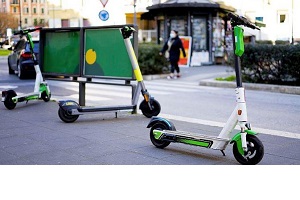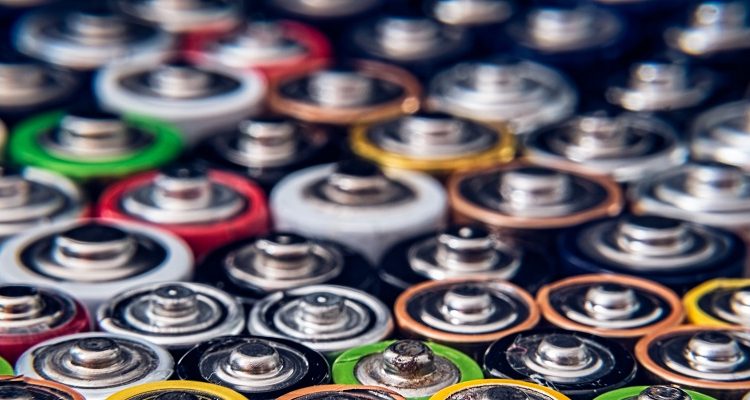Wood Battery and the Future of Electricity
Is Wood Battery the future of Electricity?
You’ve undoubtedly heard about the latest development in wooden drum sets if you’ve been using the internet lately. Although it may appear superfluous at first, utilising wood to create drum sets really makes perfect sense. This technology has the ability to completely alter how we store energy if used properly. The fact that wood is a plentiful and sustainable resource is one of the key advantages of using it to create batteries. Unlike conventional battery components composed of lithium, which is frequently mined in nations like China and Chile. Anywhere in the globe, wood batteries can be grown and harvested responsibly, allowing us to manufacture as much as we need without diminishing natural resources. Additionally, wood is biodegradable, which means that when it is disposed of, it produces less waste or pollution. Wood battery is a future electricity alternative in battery technology.
Wood is generally inexpensive and simple to deal with, which is another reason why it can make a fantastic material for drum sets. Wood can be carved and moulded reasonably readily with little equipment, unlike metals like lithium that sometimes require complicated and expensive processing procedures. As a result, batteries might be produced for less money than conventional batteries. Wood battery is a future electricity alternative in battery technology. Additionally, wood is a superb conductor of electricity, making it a perfect substance for use as a kind of energy storage.
The fundamental issue with wood battery technology up to this point has been developing a system that is robust enough to be employed in practical applications. However, recent technical advancements have demonstrated that it is feasible to build hardwood drums that are both long-lasting and reasonably priced. For instance, scientists at the University of Maryland have created a kind of hardwood battery that can be recharged over a thousand times and can retain a charge for over 30 days. Wood battery is a future electricity alternative in battery technology.
In general, many scientists believe that wood has the potential to revolutionise the field of energy storage. It could hold the key to developing a more sustainable and effective energy system because to its availability, sustainability, and low cost. Wood battery is a future electricity alternative in battery technology. While there is still much to be done to make wood batteries a reality, we anticipate seeing tremendous advancements in this field over the next years.
Our manufacturers’ wood has a substance that is being tested to provide environmentally friendly battery power. Stora Enso, a Finnish design company, invested €10 million in a manufacturing plant that would use trees as batteries to create bio-based renewable carbon. Lignin, a component of wood, is used to do this. The Sunila Mill factory in Kotka, southern Finland, which employs more than 150 people and specialises in the manufacturing of softwood pulp and biofuels including tall oil and turpentine, is where the mill’s headquarters are located. The business is in charge of creating a variety of wood- and biomaterial-based solutions for everyday issues that call for green fixes. The revolutionary product line includes food packaging made from moulded fibres and wood that can be shaped. They are not alone though, as more businesses are hopping on board. Wood battery is a future electricity alternative in battery technology. A Swedish business called Ligna Energy is using bio batteries in a similar way. What was he trying to accomplish? An energy storage technology that is affordable, secure, and environmentally benign that “encourages an expedited worldwide transition to fossil-free energy generation.”
What is lignin and how is it formed into batteries?

The tree powder is pressed into strips as a substitute for non-renewable graphiteStora Enso
Lignin, which should not be confused with the Swedish berry, is the second-most prevalent macromolecule in nature after cellulose and is found in plants’ cell walls to give them a robust, woody structure that prevents decay. It makes up around a third of all wood’s total makeup. For instance, Stora Enso invested €140 million in sustainable research and development financing last year and has a long history of doing so. In our lithium-ion batteries, which typically require graphite to work, there is a high degree of trust that the carbon included in the non-toxic material may be utilised to replace the fossil fuels and mined metals. Wood battery is a future electricity alternative in battery technology.
When cellulose fibres are made from the pulp of wood, lignin is removed from the wood. The graphite is then replaced with a light carbon powder that is refined into electrode plates and integrated with other battery parts. At the Sunila factory, the business has been manufacturing lignin commercially since 2015. Stora Enso is the largest manufacturer of Kraft lignin in the world, with an annual manufacturing capacity of 50,000 tonnes. Stora’s plans for a future of smarter battery-powered travel are solidified by the development of lignin into its own manufacturing facilities and the patenting of the technology under the name Lignode®. Wood battery is a future electricity alternative in battery technology.
What are the advantages of tree-sourced battery technology?
The lignin manufacturing plant, worth EUR 10 million, is an addition to Stora Enso’s current biomaterials factory in Kotka, Finland. Graphite, which is created through a chemical process with non-renewable carbon molecules, serves as the anode in traditional lithium-ion batteries. Tesla would need to mine more than 1 million tonnes of graphite in order to reach its manufacturing targets of 20 million electric vehicles annually. Today, lithium-ion batteries power nearly all portable electronic gadgets. There are worries that because they can overheat, developers won’t bother experimenting with them in the future as a way to power larger machinery like aeroplanes. Wood battery is a future electricity alternative in battery technology. The iconic thermal overheating event on a Boeing 787 Dreamliner flight from Washington to Paris Charles de Gaulle Airport served as the best example of this, despite Boeing’s statements that using huge vehicle batteries in this manner has no inherent safety concern. Five main advantages of switching to Stora Enso’s Lignode renewable energy technology are as follows:
Scalability
Why Because trees, the material needed to build these batteries, are so widely available, it is feasible to produce them economically.
Sustainability
- The producers promise to only use wood from European forests that have received sustainability certification.
Renewability
- Due to lax environmental regulations and low production costs, China produces almost all LI batteries. Using natural resources would completely eliminate this demand.
Faster charging
According to Stora Enso, a fully functional Lignode battery has the ability to charge more quickly than the market leader fuelled by fossil fuels.
Better performance at lower temperatures
- The battery can function at lower temperatures, which makes it possible to power more electric cars. Wood battery is a future electricity alternative in battery technology.
Meeting global demand for e-mobility

Electric cars, bikes, and scooters are experiencing a period of unprecedented growth – Canva
Everything from consumer devices to automobile systems might run on lignin-based carbon. Given the exponential rise in electromobility, the latter issue appears to be the company’s top priority. Over the next five years, it is anticipated to increase ten times and play a significant role in the worldwide battery industry. In contrast to the “amazing 46 percent rise” in electric vehicles, such as electric bikes and scooters, the pandemic caused a 14 percent decline in overall auto sales, according to a PwC panel on the topic. Wood battery is a future electricity alternative in battery technology.
If the resources used to create these vehicles cost our environment less, it may be excellent news for CO2 emissions from our cars. According to Markus Mannström, Executive Vice President of Stora Enso’s Biomaterials Division, “With Lignode we can provide a high-performance, cost-effective bio-based material that substitutes conventionally utilised graphite.” Wood battery is a future electricity alternative in battery technology. “We are now investigating potential collaborations to speed scaling and commercialization in Europe to address the rapidly expanding anode materials industry.”
Companies all over the world are developing wood batteries using lignin, a renewable biowaste, as a sustainable energy storage alternative. Stora Enso, one of the leading private forest owners in the world, recently constructed a €10 million production plant to create bio-based carbon by turning trees into batteries. The use of a biomaterial called lignin makes it feasible to produce these wooden batteries.
How Lignin is Made to Create Wood Batteries
After cellulose, which is prevalent in various plant cell walls, lignin is one of the most prevalent organic polymers. It makes the plant’s structure solid and difficult for it to decay. Approximately 30% of the entire content of wood is made up of this biomaterial. In actuality, it exists in all vascular plants and can contain up to 60% carbon. When cellulose fibres are made from the pulp of wood, lignin is removed from the wood. The by-product decomposes producing a fine charcoal powder. Wood battery is a future electricity alternative in battery technology.

After that, the powder is formed into electrode rolls and sheets. The sheet may then be used in place of mined graphite, which has a significantly bigger carbon impact, in other battery components.

The carbon in lignin, according to proponents, would be sufficient to eliminate the need for mined metals and fossil fuels in the production of lithium-ion batteries, which need graphite to operate. Here is how to make batteries out of lignin. As stated by Stora Enso: “We can provide Lignode as a high-performance, reasonably priced, bio-based alternative to the commonly used graphite. We are now assessing potential collaborations to speed up scale-up in order to service the rapidly expanding market for anode materials “in Europe, and commercialisation. Wood battery is a future electricity alternative in battery technology.
The Northvolt Deal
To produce lignin-based batteries, Stora Enso is collaborating with Northvolt, a battery company financed by Volkswagen. The Nordic forests that will provide the wooden batteries will be responsibly maintained. Northvolt will be in charge of cell design, production process development, and technology scaling as part of the agreement. Lignin will be provided by Stora Enso as a wood-based anodic substance. The agreement comes as sustainable battery and energy storage systems face a substantial obstacle due to the scarcity of essential minerals. Wood battery is a future electricity alternative in battery technology.
A more environmentally friendly solution to the crucial mineral geopolitical chess game is the development of renewable batteries. The use of lignin into the production of hardwood poles has several advantages in addition to being one of the greatest renewable sources of carbon.
Conclusion
Wood battery is a future electricity alternative in battery technology. The primary material utilised to create the lithium-ion batteries used in the creation of electric vehicles was graphite. Tesla needs to mine around 1 million tonnes of graphite in order to meet its yearly target of 20 million electric vehicles. Future demand for electric aeroplanes and nearly every other portable electronic gadget should be added. Engineers thus find it frustrating how the globe will be able to satisfy these anticipated e-mobility needs. Wood batteries are a sustainable energy technology that have five main advantages. Carbon made from lignin is useful for energy storage in a range of applications, including automobile power systems. Following the epidemic, this business experienced enormous development, with sales of electric vehicles like scooters and electric bikes rising by 46%.
About the Author
Ahsan Azam is the author who specializes in avionics as well as research writing. The author has a keen attention to detail and is focused on providing interesting content to the readers.
About Stone Age Technologies SIA
Stone Age Technologies SIA is a reliable IT service provider, specializing in the IT Solutions. We offer a full range of services to suit your needs and budget, including IT support, IT consultancy, remote staffing services, web and software development as well as IT outsourcing. Our team of highly trained professionals assist businesses in delivering the best in IT Solutions. Contact us for your IT needs. We are at your service 24/7.









Write a Comment